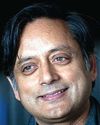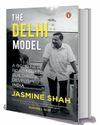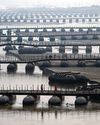
World War II stopped Dr Homi J. Bhabha, the father of India’s nuclear programme, from returning to the UK and continuing his research there. So he stayed back in India and that became a turning point for Indian science, especially atomic energy. Though perhaps it was a golden era of Indian science, going by the pathbreaking contributions by the likes of C.V. Raman, S.N. Bose, Meghnad Saha, J.C. Bose and others, it was Bhabha, a cosmic ray physicist, who ushered in an era of mission mode programmes. He used his proximity with the Tata family and prime minister Jawaharlal Nehru to create an India-specific vision in atomic energy, space and electronics.
That was also the time when the development of nuclear weapons and a new geopolitics seemed to emerge. Bhabha ensured that the political leadership appreciated the ramifications of this emerging development from an Indian perspective, fully cognisant of the potential strengths of Indian scientific community. He did not want them to simply drift with the rest of the world.
While developments in China at that time did spark a debate on policy options for India, it was really the Bangladesh war that triggered the peaceful nuclear explosion experiment in May 1974. Underground nuclear explosions for peaceful applications were being pursued by some countries and discussed in conferences at the International Atomic Energy Agency. After India’s Peaceful Nuclear Explosion (PNE), however, the term and the related programmes disappeared from the scene. India came under an intense technology denial regime. The Americans discontinued the contracted fuel supplies to Tarapur, while the Canadians withdrew from the collaborative programme to build two PHWR (pressurised heavy-water reactor) units in Rajasthan.
This story is from the June 09, 2024 edition of THE WEEK India.
Start your 7-day Magzter GOLD free trial to access thousands of curated premium stories, and 9,000+ magazines and newspapers.
Already a subscriber ? Sign In
This story is from the June 09, 2024 edition of THE WEEK India.
Start your 7-day Magzter GOLD free trial to access thousands of curated premium stories, and 9,000+ magazines and newspapers.
Already a subscriber? Sign In

Forging the future
As the curtain falls on 2024, I take pride in the extraordinary milestones achieved under the leadership of Prime Minister Narendra Modi. This year stands as a testament to the Modi government's resolve to forge a resilient and forward-looking Bharat. From groundbreaking advancements in infrastructure to visionary global initiatives, these efforts resonate deeply with the vision of Viksit Bharat.

Our strange democracy
Abraham Lincoln is lauded as among the very best presidents the US ever had: the statesman par excellence successfully steered the nation through the devastating and perilous years of the American civil war. Not only did Lincoln manage to keep his country united, he also ensured the passage of the 13th amendment to the US constitution, which abolished slavery.

Five years of post-pandemic fashion
It has been five years since we discovered what Covid-19 was, and five years since it disrupted the world forever. The World Health Organization activated their emergency systems on January 1, 2020, and informed the world by January 4, 2020. By the end of that week, they had set guidelines for various countries to follow. Comparable to the Spanish flu of 1918, more than 7 million people have died of Covid according to official data. Unofficially, no one has an idea. WHO has just this week asked China to provide critical data to understand the virus's origins as a “moral and scientific imperative”.

Community spirit
Rhythm of Dammam opens a window to the world of African-origin Siddis of Uttara Kannada

'Breaking' down a scandal
Society Girl is not just a case study of a high-profile death in Pakistan but also a stark commentary on media trials

Progress card
Jasmine Shah's book tells you what the AAP has achieved in Delhi in the last 10 years

SENSE IN NONSENSE
In his latest book of poetry, Ruskin Bond is at his funniest

Get ready for Trump bump
The ‘butterfly effect’ is a beautiful, mysterious metaphor of the planet’s interconnectedness.

QUIET FLOWS THE FAITH
The melding of an ancient amorphous faith and the latest science; of an antique tradition and new practices; ways of life older than memory and new expressions is happening at Prayagraj in Uttar Pradesh.

Trash to treasure
How a weed-choked Dal Lake spurred Maninder Singh's journey to become a waste management visionary